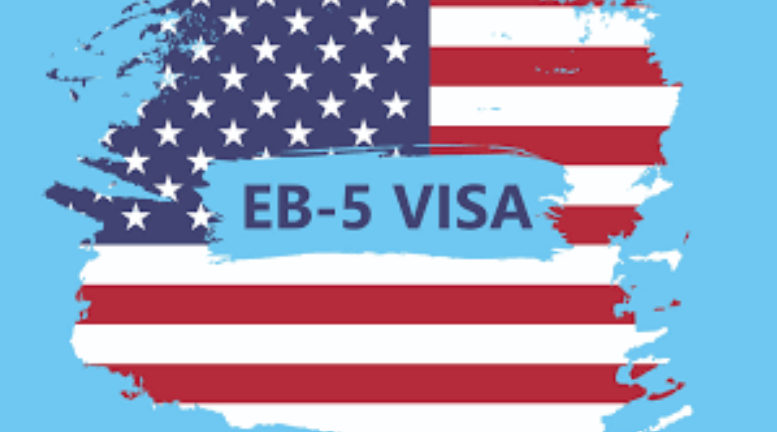EB-5 Resurgence
Kyle Huffman • May 9, 2024
The EB-5 Immigrant Investor Visa Program has long stood as a beacon of opportunity for those seeking to establish roots in the United States. However, in recent years, its allure dimmed due to concerns surrounding integrity, program abuse, and uncertainties regarding its future. Yet, with the passage of the EB-5 Reform & Integrity Act of 2022, the EB-5 program finds itself on the brink of a renaissance, once again capturing the attention of investors worldwide.
For those unfamiliar, the EB-5 program offers foreign investors and their families a pathway to permanent residency in the United States by investing a minimum amount in a qualifying U.S. business venture. This investment must create or preserve a certain number of jobs for American workers. Historically, the program has been popular among affluent individuals seeking not only residency but also the opportunity to contribute to the U.S. economy.
However, in recent years, the program faced criticism and scrutiny due to allegations of fraud, abuse, and inefficiencies. Investors became wary, and the program's popularity waned. Prospective applicants were hesitant to commit significant funds to a program plagued by uncertainties and bureaucratic hurdles.
Enter the 2022 EB-5 Reform and Integrity Act. This landmark legislation addresses many of the concerns that have plagued the program in recent years. Among its key provisions are increased investment thresholds, stricter oversight measures, and reforms aimed at promoting integrity and transparency within the program.
One of the most significant changes introduced by the reform act is empowering the United States Citizenship and Immigration Services (USCIS) to more effectively monitor and investigate potential instances of fraud or abuse. Additionally, the act introduces measures to streamline the application process, reducing bureaucratic red tape and expediting the adjudication of EB-5 petitions, resulting in faster processing for legitimate investments.
The passage of the 2022 EB-5 Reform and Integrity Act has injected new life into the EB-5 program, reigniting interest among investors and immigration stakeholders alike. With its enhanced integrity measures and streamlined processes, the program once again represents a compelling opportunity for those seeking to pursue the American dream.
Already, we are witnessing a resurgence of interest in the EB-5 program from investors worldwide. Developers and regional centers are seizing the opportunity to capitalize on the renewed enthusiasm, presenting a diverse array of investment opportunities across various industries and regions.
Moreover, the EB-5 program's revitalization holds significant implications for the U.S. economy. By attracting foreign investment, the program has the potential to create jobs, spur economic growth, and facilitate the development of communities in need. Furthermore, it underscores the United States' commitment to welcoming and harnessing the talents and resources of immigrant investors.
The passage of the 2022 EB-5 Reform and Integrity Act marks a pivotal moment in the history of the EB-5 program. By addressing longstanding concerns and implementing comprehensive reforms, the act has restored confidence in the program and positioned it for a prosperous future. As investors and developers alike embrace the opportunities presented by the revitalized EB-5 program, we anticipate a resurgence in interest and activity, reaffirming the program's status as a cornerstone of American immigration policy and economic development.
I encourage any prospective investors to meet with one of our skilled attorneys to discuss the possibility of securing permanent residency, and eventually citizenship, through a qualifying investment under the EB-5 Immigrant Investor Visa Program. We look forward to working with you!
This blog is not intended to be legal advice and nothing here should be construed as establishing an attorney client relationship. Please schedule a consultation with an immigration attorney before acting on any information read here.
Kyle Huffman
Similar Posts

Embarking on the EB-5 immigration journey is both a profound personal endeavor and a strategic investment decision. For individuals seeking to make the United States their new home while contributing to its economic landscape, the EB-5 Immigrant Investor Program offers a pathway unlike any other. This program, established by the U.S. government in 1990, provides foreign investors with the opportunity to obtain permanent residency in the United States by investing in job-creating enterprises . However, navigating the complexities of the EB-5 process requires a thorough understanding of its intricacies, requirements, and potential pitfalls. In this guide, we provide a brief overview of the steps and documents involved in the EB-5 immigration process, shedding light on its key components, eligibility criteria, investment options, and procedural steps, empowering prospective investors with the knowledge needed to embark on this transformative journey with confidence. Before selecting a project and making the investment, it is important for an EB-5 investor to meet with an immigration attorney to strategize for the application. It is required to show the Immigration Service that all funds used in the investment were lawfully earned and retained , so your attorney will want to understand where the money for the investment is coming from and where it has been held since it was earned. Once satisfied with the source and tracing of funds, the investor can select a project to invest in. Following the passage of the EB-5 Reform & Integrity Act, certain investment projects have already been pre-approved by USCIS by filing form I-956 and receiving designation as a Regional Investment Center. The required minimum investment is $1,050,000 by default; however, this amount is reduced for investment centers in “Targeted Employment Areas” to $800,000 . After submitting the investment to the regional center, the investor will then work with their attorney to create the I-526 petition. At this stage of the case, it is time to show USCIS the source and tracing of all of the funds used for the investment. The types documentation required in order to show the lawful source and tracing of funds is extremely broad and highly dependent on where the money is coming from in each particular case, but the most common documents include W-2 or 1099 tax forms, federal and state tax returns, bank account statements, purchase and sale contracts from the sale of real estate, stock certificates, loan contracts, inheritance documents, and wire transfer records, among many other possibilities . EB-5 applicants can either process their green cards through USCIS by filing an I-485 application for Adjustment of Status, or process through the consulate in their home country . If already in the United States on another valid status, the Adjustment of Status application can be submitted concurrently with the I-526 petition. If processing through a consulate overseas, the investor will have to wait until the I-526 is approved before beginning the consular process. The primary applicant, along with a spouse and any unmarried children under 21 years of age are able to receive permanent residency through the EB-5 process. At the completion of either process, whether requesting the Green Card within the United States or seeking entry through a consulate, USCIS will issue conditional green cards, with a validity of two years . Within the last three months before the conditional green card expires , the investor and family will need to file an I-829 application for removal of conditions on the green card. At this stage, nearly two years after the investment has been made, the Immigration Service is confirming whether the investment remains in the project and the requisite 10 jobs have been created . Following I-829 approval, the investor and their family will receive permanent green cards, with a 10-year validity. The investor and family will be able to apply for United States Citizenship five years after the initial green card is issued . The conditional green card does count for this purpose, so citizenship will become a possibility approximately 3 years after the permanent green cards are issued. In conclusion, the EB-5 Immigrant Investor Program stands as a unique avenue for individuals around the globe to fulfill their aspirations of living and thriving in the United States. Through strategic investment and dedication to job creation, participants not only secure permanent residency but also contribute to the nation's economic growth and prosperity. However, it is crucial for prospective investors to approach the EB-5 process with meticulous planning, thorough research, and expert guidance to navigate its complexities successfully . By understanding the program's requirements, exploring investment options, and adhering to procedural guidelines, aspiring immigrants can embark on their EB-5 journey with clarity and confidence. Ultimately, the EB-5 program represents more than just a pathway to residency—it embodies the spirit of entrepreneurship, innovation, and opportunity that defines the American dream. If you believe you may qualify for the EB-5 program or if you have any questions, please schedule a consultation with one of our experienced attorneys and we will be more than happy to assist you.

It’s no secret that the U.S. immigration system has faced increased scrutiny and change in recent months. From evolving policies to headlines filled with uncertainty, it’s understandable that many individuals are left wondering: Is this still the right time to pursue a future in the United States? The answer is yes—and here’s why. Despite the shifting political landscape, the core structure of U.S. immigration law remains firmly in place. While the process may appear more complex or demanding than it once was, the legal pathways to live, work, and thrive in the United States are still open and accessible to those who take the proper steps. What often gets lost in the conversation is that the United States remains a country built on innovation, creativity, and resilience. It continues to attract global talent, entrepreneurs, artists, and professionals from all walks of life. Whether you are launching a business, advancing your career, or seeking a better life for your family, the United States offers unparalleled opportunities to those who are prepared and determined. Much of what makes the United States a global economic and technological leader today is the direct result of contributions made by immigrants. Nearly half of the current Fortune 500 companies were founded by immigrants or their children. Immigrant entrepreneurs have long been an essential part of America’s economic success story. Some of the largest and most recognizable American companies were founded by immigrants or the children of immigrants. This includes household names such as Apple and Costco. Moderna, the pharmaceutical company and vaccine producer, was founded by a Canadian-born stem cell biologist, Derrick J. Rossi, whose parents themselves emigrated from Malta. These success stories are not outliers; they are part of a broader pattern that reflects the drive, innovation, and resilience that immigrants bring to the country. The United States also offers one of the most dynamic and diverse economies in the world. It is a place where hard work, fresh ideas, and entrepreneurial vision are rewarded. For creative professionals, business leaders, and investors, the United States provides a unique platform to grow, connect, and gain global influence. Its competitive marketplace, access to capital, and culture of innovation create unmatched opportunities for those ready to seize them. While the immigration process requires careful planning, that process is far from impossible. Indeed, having strong legal guidance is one of the most effective advantages an applicant can possess. Immigration law is complex, and each case must be evaluated individually. A clear, strategic plan tailored to your background and goals can significantly improve your chances of success. What may feel like a hurdle at first glance is often navigable with solid preparation and documentation. At our immigration law firm, we have had the privilege of assisting individuals from all over the world as they navigate these complexities. Time and again, we have witnessed how determination, careful preparation, and experienced legal counsel can turn uncertainty into opportunity and help transform a vision for the future into reality. If you have been uncertain about whether to move forward, let this be your sign to take the next step. The United States is still a land of possibilities. If you are ready to take that step, now is the time to act. Let us build your path forward together.

For individuals applying under the O-1A or EB-1A categories , both reserved for professionals with extraordinary ability, letters of recommendation are a critical part of the petition. These expert testimonial letters offer valuable insight into your accomplishments, reputation, and influence within your field. When written properly, they help demonstrate that you truly stand out as someone who has risen to the very top of your profession. Many petitions submitted by highly accomplished individuals fall short because the recommendation letters are vague, overly personal, or fail to clearly explain why the applicant meets the legal standard of extraordinary ability. That is why taking the time to prepare your recommenders effectively is not just helpful. It is essential to build a strong and persuasive case. First, it is important to help your recommenders understand the purpose of the letter . This is not a casual reference or character recommendation. It is a formal declaration to U.S. Citizenship and Immigration Services that you possess extraordinary ability in your area of expertise. The letter must describe your achievements in concrete terms and explain why your work has had a significant impact and recognition within your field. Many professionals, no matter how accomplished, are unfamiliar with the specific requirements of the O-1A and EB-1A categories. It is helpful to provide them with a short explanation of what is needed, and in some cases, a sample or outline to guide them. Selecting the right recommenders is just as critical as the content of the letters themselves. While USCIS gives greater weight to letters from independent experts, independence should not be confused with distance. The ideal recommender is someone who knows your work well and can provide specific and credible insight into your contributions, impact, and reputation in the field. A letter from someone who barely knows you, or one that focuses more on the recommender’s own accomplishments than yours, is unlikely to carry much weight with USCIS. A common mistake is submitting letters that read more like summaries of the recommender’s resume than a meaningful evaluation of your achievements. While a brief introduction of the recommender’s qualifications is important to establish credibility, the focus must remain squarely on you , your work, your innovation, and the ways in which your impact is considered extraordinary. The strongest letters go beyond general praise. They include clear and detailed examples of how your contributions have influenced others in your field or led to measurable outcomes. To make the letter as accurate and persuasive as possible, you should provide your recommenders with a summary of your most important professional milestones. This might include major awards, media coverage, patents, publications, notable leadership roles, or metrics showing the commercial or scientific success of your work. Well-prepared recommendation letters serve as both evidence and narrative. They help fulfill specific legal requirements and also tell the story of how and why your work has earned you distinction. In a category defined by terms like extraordinary ability, it is important that every part of your petition reinforces that standard. At Santos Lloyd Law Firm, we work closely with our clients and their recommenders to develop strong and compelling testimonial letters that meet USCIS expectations and highlight each applicant’s unique contributions.




